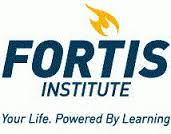What do they do?
Install and repair telecommunications cable, including fiber optics.
Also known as:
Broadband Technician, Cable Splicer, Cable Technician, Cable Television Technician (Cable TV Tech), Combination Man, Combination Technician, Customer Service Technician, Fiber Optic Splicer, Fiber Technician, Field Service Technician, Installation and Repair Technician (I and R Technician), Installer, Lineman, Outside Plant Technician, Service Technician, Splicing Technician, Telecommunications Installer, Telecommunications Technician, Telephone Cable Splicer, Telephone Technician (Phone Technician)
-
2.5%
Change
Ranks #30 in job growth rate360Job Openings
Ranks #9 in net job growth
Looking for colleges that offer a specific major? Use the College Match Tool to find your best-matched schools and discover your estimated Net Price!
- High school diploma equivalent (36%)
- Some college, no degree (34%)
- Associate's degree (14%)
- Bachelor's degree (9%)
- Less than high school diploma (5%)
- Master's degree (2%)
- Doctorate or Professional Degree (<1%)
People in this career often know a lot about:
- Telecommunications - Knowledge of transmission, broadcasting, switching, control, and operation of telecommunications systems.
- Customer and Personal Service - Knowledge of principles and processes for providing customer and personal services. This includes customer needs assessment, meeting quality standards for services, and evaluation of customer satisfaction.
- English Language - Knowledge of the structure and content of the English language including the meaning and spelling of words, rules of composition, and grammar.
- Public Safety and Security - Knowledge of relevant equipment, policies, procedures, and strategies to promote effective local, state, or national security operations for the protection of people, data, property, and institutions.
People in this career often have talent in:
- Oral Comprehension - The ability to listen to and understand information and ideas presented through spoken words and sentences.
- Oral Expression - The ability to communicate information and ideas in speaking so others will understand.
- Near Vision - The ability to see details at close range (within a few feet of the observer).
- Problem Sensitivity - The ability to tell when something is wrong or is likely to go wrong. It does not involve solving the problem, only recognizing that there is a problem.
- Arm-Hand Steadiness - The ability to keep your hand and arm steady while moving your arm or while holding your arm and hand in one position.
- Extent Flexibility - The ability to bend, stretch, twist, or reach with your body, arms, and/or legs.
People in this career often do these activities:
- Test communications equipment to ensure proper functioning.
- Adjust equipment to ensure optimal performance.
- Install audio or communications equipment.
- Explain use of products or services.
- Collect payments for goods or services.
- Travel to work sites to perform installation, repair or maintenance work.
- Measure equipment outputs.
- Inspect telecommunications equipment to identify problems.
- Analyze test or performance data to assess equipment operation.
- Connect electrical components or equipment.
- Climb equipment or structures to access work areas.
- Install insulation in equipment or structures.
- Clean equipment, parts, or tools to repair or maintain them in good working order.
- Maintain work equipment or machinery.
- Lay cables to connect equipment.
- Calculate requirements for equipment installation or repair projects.
- Move large objects using heavy equipment.
- Dig holes or trenches.
- Compact materials to create level bases.
- Assemble structural components.
- Operate cranes, hoists, or other moving or lifting equipment.
This page includes data from:

 Occupation statistics: USDOL U.S. Bureau of Labor Statistics Occupational Employment Statistics
Occupation statistics: USDOL U.S. Bureau of Labor Statistics Occupational Employment Statistics
 Videos: CareerOneStop, USDOL/ETA and the Minnesota Department of Employment & Economic Development
Videos: CareerOneStop, USDOL/ETA and the Minnesota Department of Employment & Economic Development








